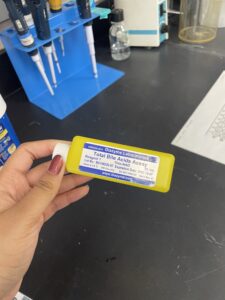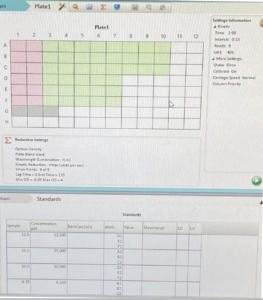Tiny Fighters: An Expectation Unrequited
Hi everyone! Welcome back to my blog!
Last week, I visited the lab and delved deeper into conducting a biological assay to determine the significance of breastfeeding in the incidence of NEC. A biological assay is a scientific method of experimentation that measures the effect of a substance on living cells, plants, or animals, to reveal its potency or quality. Such assays are essential in determining the concentration, purity, and biological activity of a substance. In our case, we were testing a substance that targets a specific enzyme in bile acids.
We collected tissue samples from the colons of young mice (pups).To perform the assay, we used two reagents and divided the subjects into two groups. The first group comprised dam-fed pups who were stressed for NEC, but they had been breastfed. The second group consisted of pups who were also stressed for NEC, but they were fed through a tube instead of obtaining nutrients from milk. We then loaded wells and pipetted using the two reagents, carefully monitoring the process to ensure accurate results.

Once we had collected all the required data, we used specialized software that could compile and calculate the information based on standard deviation and averages. This software was particularly useful in helping us to analyze and understand the data as it allowed us to quickly and accurately process large amounts of information.
After we had analyzed the data using the software, I manually calculated the coefficient of variation for each well. This involved dividing the standard deviation by the mean of each well. By calculating the coefficient of variation for each well, we were able to obtain a better understanding of the variations within the data set. Once we had completed these calculations, we created graphs to represent the data. These graphs provided us with a visual representation of the data, which made it easier for us to identify any patterns or trends that may have been present within the data set. We then carefully analyzed these graphs to determine if our extrapolation was statistically significant.

Unfortunately, our analysis showed that our extrapolation was not statistically significant. When the data retrieved yields an outcome that’s not statistically significant, it means that what we are testing did not hold. In this case, breastfeeding seemed to not be significant in the incidence of NEC. While this was a disappointing result, it provided us with valuable insights into the data set and helped us to identify areas where we could improve our approach in the future. However, I will be returning to the lab soon, and I am hopeful that we will achieve more promising results. Thank you for reading!



Comments:
All viewpoints are welcome but profane, threatening, disrespectful, or harassing comments will not be tolerated and are subject to moderation up to, and including, full deletion.